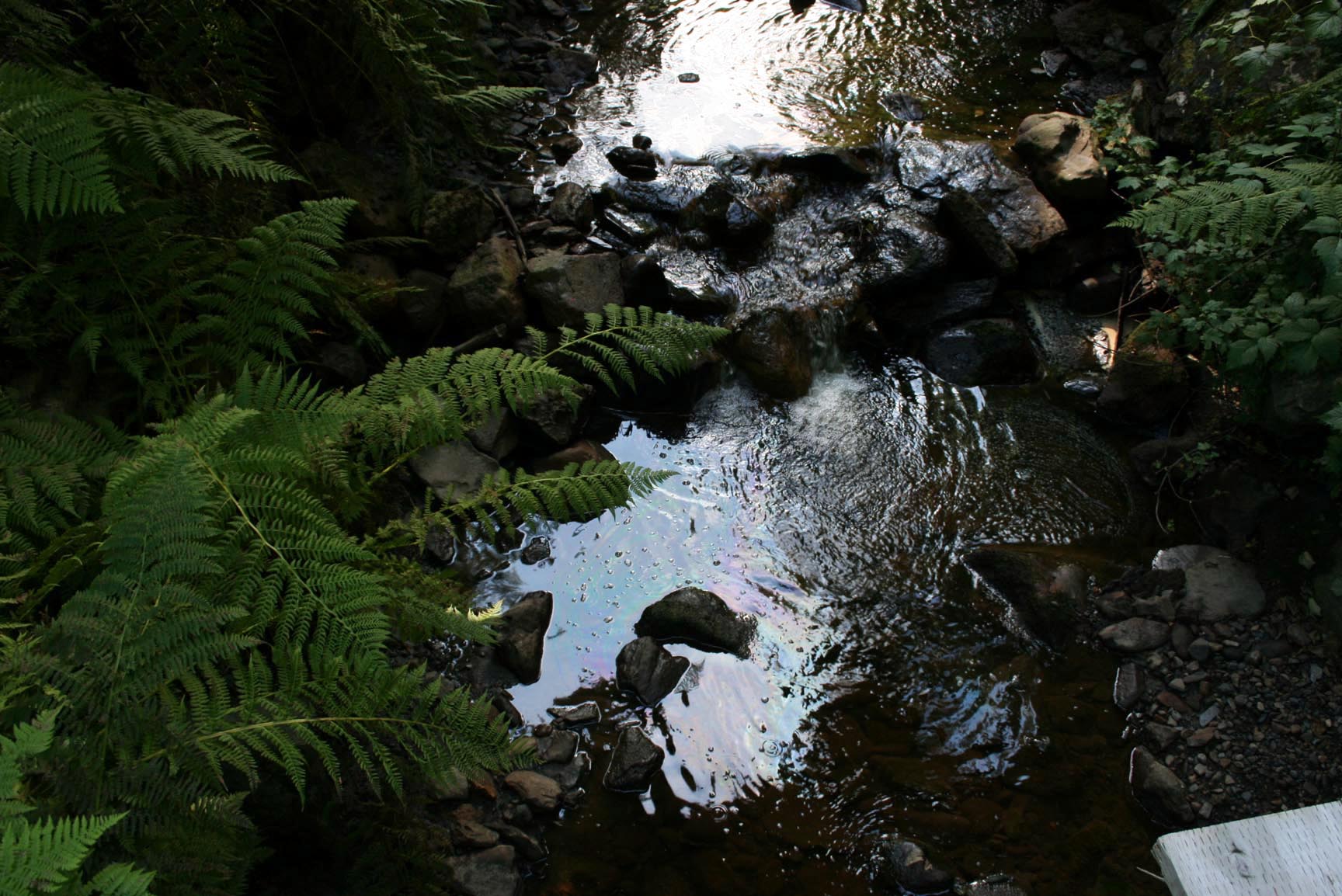
The smell of diesel and rainbow sheen on a Douglas Island creek in July led environmental responders on a complicated three-month hunt to a leaking underground fuel tank.
The Alaska Department of Environmental Conservation answered a homeowner’s call about the foul smell and oily creek. Investigators traced the sheen back to the soil around an old culvert that runs under Nowell Avenue.
Complicating the search for the source was the number of apartment complexes in the area—many with buried fuel tanks says Crystal Smith who was part of the response team.
“Years ago a number of them were put in just because people didn’t want to have a tank in their backyard. It’s not the prettiest thing to have in your backyard. So people put them underground not knowing the risk of having them underground,” Smith says.
The team checked tanks for water which can indicate if a tank is leaking. But none of the tanks showed high amounts of water. They reviewed fuel records for the complexes to see if any had large number of deliveries coming in, but again nothing seemed out of the ordinary. City crews pulled manholes and storm drains; they rigged up cameras in culverts.
By the end of August the response team narrowed down the potential tanks and used special dyes that could travel with the fuel.
It was a waiting game punctuated with manning absorbent materials in the creek to try and clean up the spill.
On Halloween, the team finally started to see some color in the creek and after a couple days it turned in a bright red that had been added to one of the tanks. It had taken 63 days for the dye to travel from the tank to the creek.
Since then, the owners of the tank have started the lengthy and expensive process of cleaning up.
[quote]“We’ve actually crunched the numbers around here and asked an environmental consultant. For every gallon of fuel that is lost in a fuel spill, the cleanup cost is about $100 a gallon. So 75 gallons lost would be $7,500 just in the cleanup cost,” Smith says.[/quote]The size of the area that the fuel contaminated is hard to guess because the tank was buried.
“It’s really hard to estimate because we don’t know how long it’s been going, but in looking in how much they recovered underneath the tank and how big of an area that it was spread over we’re saying it’s probably over a 1,000 gallons that was released, “ Smith says. “It’s really hard to make an estimate with these, but we know it was a large amount. We know that it was leaking for at least 3 months.”
Smith stresses the importance of closely monitoring underground tanks and even replacing them with an above-ground tank before a spill happens. The integrity of underground tanks can be checked by testing for water and oil tank pressure.
“If they want their tank to be tested for water, then we here at the state are more than happy to come out and test their tanks or they can ask their fuel providers. A lot of times people carry the water finding test on their trucks and they can do it right then and there.”
Absorbent material is still sopping up fuel from the creek. Tank owners are required to maintain it until the water runs clean.
But DEC officials are calling it a successful cleanup. They’re using it to educate others to pay attention to their buried, unseen tanks.
The DEC website has guidance on how to inspect fuel tanks and what to do in the event of a leak.
Correction: An earlier version of this story stated that the dye took 36 days to travel from the tank to the creek. It was actually 63 days and the story has been corrected to reflect that.


